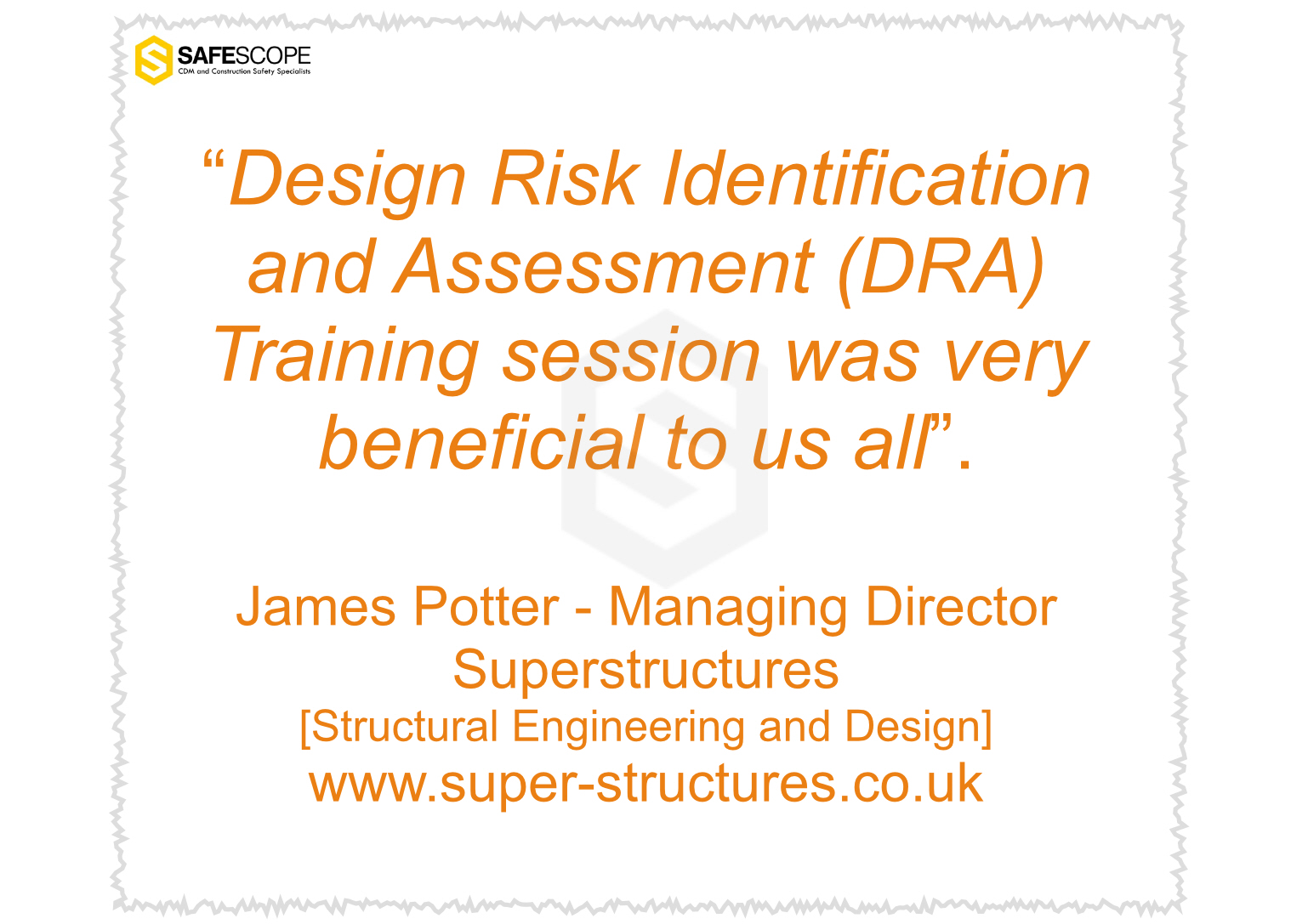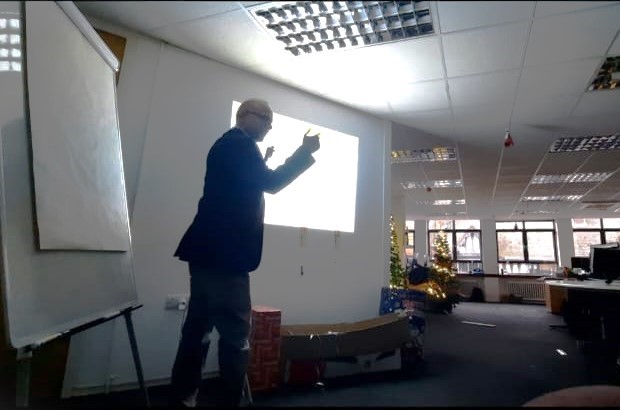CDM Regulations 2015 Design Risk Assessment (DRA) Training
Course Introduction
In the UK, the
One of the main duties for
Based on our extensive experience in the construction industry, we at Safescope have developed a bespoke and easy to understand step-by-step process to assist designers in identifying design risks in a systematic and methodical manner.
Designers sometimes also struggle with how to prepare and present the design risk information (usually referred to as
This unique training course has been designed to equip
This course is personally designed by our founding director, Dr. Khalid Bhutto, and reflects his extensive knowledge and expertise in the subject matter.
Please note that for this training course good prior knowledge and understanding of the application of
Find out more about the

Course Aims
This training course aims to provide designers with in‐depth understanding of health and safety risks in a construction project design, risk identification, assessment, and presentation of risks information.
Course Objectives
The course objectives are as follows:
- To explain the need for health and safety considerations in a construction project design.
- To introduce “Construction Risks Identification Process” in a systematic manner.
- To provide a practical hands-on project specific experience of identifying and assessing design health and safety risks.
- To present the method of preparing and presenting design risk information.
Course Outcomes
On successful completion of this course the attending designers will be able to:
- Understand the context of design health and safety requirements.
- Identify design health and safety risks in a typical standard construction project.
- Know where to look for further information for design health and safety risks in a complex construction project.
- Prepare and provide design risks in a Design Risk Assessment (DRA) template (or using any alternative method) in an effective and meaningful manner.

Dr. Khalid Bhutto - delivering Designer Risk Assessment (DRA) Training
Course Outline
The course contents are as follows:
- Introductions
- Purpose of the training course, objectives, and outcomes
- Design Safety
- Introduction to CDM Regulations (Purpose of CDM for Designer)
- CDM Dutyholders
- Summary of relevant CDM Designer Duties
- Building Regulations vs CDM Regulations (for Designers)
- Difference between Hazard and Risk
- Spot the Risks (Scenario)
- Factors Affecting Individual Designer Risk Identification Level
- Design Risks Identification
- Risks Identification Process (AVF)
- Existing site conditions
- Construction phase
- Post completion phase
- ERSSI (Eliminate, Reduce, Specify, Segregate, and Inform)
- Assessment of Risk and Control Measures
- Designer Duties Framework
- Principle Categories of Construction Project Risks
- Typical Design Risks
- Designer Risk Assessments (DRAs)
- Definition, Concept, Purpose
- Template and Examples
- Legal considerations
- Pre‐construction Information
- General Principles of Prevention
- Particular Risks
- Workplace (Health, Safety and Welfare) Regulations 1992
- Construction work stages for DRA
- Process of a DRA
- Essentials of an effective DRA
- What not to include in a DRA
- Alternatives to a DRA
- Designer Risk Identification Hands-on Tutorial
- Guidance
- Course Assessment / Quiz
- Conclusion and Discussion
Couse Details
Contact Details
- Please complete details in the
'Book this training course' form. - Alternatively, please download and send us a completed
Training Enquiry Form . - If you would rather talk to us then please contact Lindsey or Khalid on
01473 407020 - You can also get in touch with us by
contact@safescope.com

Director
T: 01473 407020
M: 07818 288122
